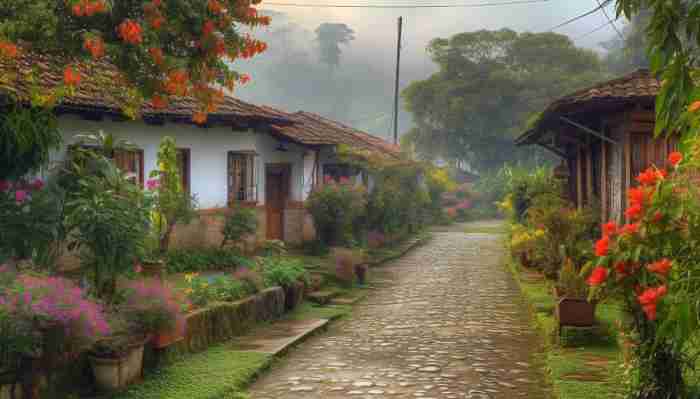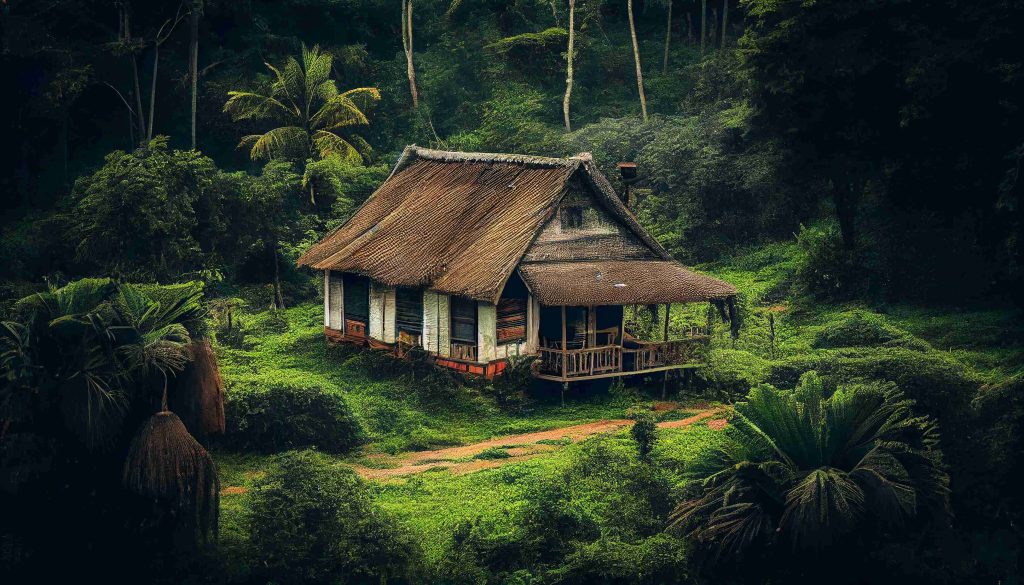Embark on a journey through the enchanting archipelago of Indonesia, where a tapestry of cultural diversity and natural wonders unfolds in the form of seven exotic villages waiting to be discovered. These hidden gems, each with its unique charm, offer a glimpse into the rich heritage and traditions that define the diverse landscapes of this Southeast Asian nation.
From the misty highlands of Flores to the ancient Aga village of Tenganan Pegringsingan in Bali, these villages beckon intrepid travelers seeking an authentic escape off the beaten path. Join us on a captivating exploration of these seven exotic villages, where the warmth of local hospitality, centuries-old customs, and breathtaking scenery converge to create unforgettable experiences.
7 Exotic Villages in Indonesia You Should Visit

Indonesia, an archipelago of diverse landscapes and cultures, conceals within its borders a tapestry of enchanting villages that offer a glimpse into the country’s rich heritage. From tranquil coastal settlements to villages nestled in the heart of lush rainforests, these exotic locales beckon travelers seeking authenticity and a break from the ordinary. Among the jewels waiting to be explored is Bahorok, a village that stands as a testament to Indonesia’s natural beauty and cultural richness. Join us on a journey through seven exotic villages, including Bahorok, where tradition, nature, and community create an unforgettable tapestry of experiences.
1. Bahorok: Gateway to Sumatra’s Wilderness Wonderland
Nestled along the banks of the Bohorok River, Bahorok serves as the gateway to the Gunung Leuser National Park. Known for its lush rainforests and the famous Orangutan Rehabilitation Centre, Bahorok provides a unique blend of adventure and conservation. Explore the dense jungles, trek alongside majestic orangutans, and witness the harmonious coexistence between the village and the surrounding wilderness.
2. Tenganan Pegringsingan: Bali’s Ancient Aga Village
Step into the past as you visit Tenganan Pegringsingan, an ancient Aga village in Bali. Known for its unique architecture and traditional weaving techniques, this village offers a cultural immersion into Bali’s rich history. The annual Perang Pandan festival, where locals engage in friendly duels using thorny pandanus leaves, adds a touch of exhilarating tradition to this exotic destination.

3. Trunyan: A Lakeside Village of Bali Mystique
Nestled along the shores of Lake Batur, Trunyan stands as a distinctive village known for its unconventional burial practices. Instead of cremation or burial, the deceased are placed on the ground to decompose naturally. Surrounded by the stunning scenery of the lake and Mount Batur, Trunyan offers a tranquil escape from the bustling tourist hubs.
4. Kete Kesu: Torajan Heritage in Sulawesi
Journey to the highlands of Sulawesi, where the Torajan village of Kete Kesu stands as a living testament to indigenous culture. Surrounded by lush landscapes and adorned with traditional tongkonan houses, this village is a treasure trove of Torajan heritage. Explore intricate carvings, witness vibrant funeral ceremonies, and engage with the warm hospitality of the Torajan people.
Also read: 12 Best Restaurants in Kuta, Bali for 2023
5. Wae Rebo: Flores’ Traditional Village in the Clouds
Perched high in the Manggarai Mountains, Wae Rebo is a traditional village that offers a rare glimpse into the ancient ways of the Manggarai people. Surrounded by dense forests, this village consists of cone-shaped houses known as Mbaru Niang. Experience the warmth of community life, partake in traditional ceremonies, and savor the tranquility of Flores’ highland charm.
6. Desa Ngadisari: Gateway to Mount Bromo’s Majesty
Desa Ngadisari, situated at the foot of Mount Bromo in Java, is a picturesque village offering a front-row seat to one of Indonesia’s most iconic landscapes. Wake up to panoramic views of Mount Bromo, Mount Batok, and the Sea of Sand. The village serves as the launching point for those seeking the thrill of witnessing a sunrise over the ethereal Bromo Tengger Semeru National Park.
7. Kanekes: Preserving the Baduy Culture in West Java
Nestled in the hills of West Java, Kanekes is home to the Baduy people who adhere strictly to their traditional customs and rituals. With no electricity, limited contact with the outside world, and traditional bamboo houses, Kanekes offers a rare insight into a community determined to preserve its cultural identity against the currents of modernity.
Indonesia’s Bounty of Exotic Villages: Unraveling the Tapestry of Diversity

Nestled within the sprawling archipelago of Indonesia lies a trove of hidden treasures — exotic villages that stand as testaments to the nation’s rich cultural heritage and breathtaking natural diversity. The question that arises is not why Indonesia has so many exotic villages, but rather how these communities have flourished across the nation’s landscapes. This article seeks to delve into the myriad factors that contribute to Indonesia’s abundance of exotic villages, exploring the interplay of geography, history, and cultural traditions that weave the tapestry of diversity that defines this Southeast Asian gem.
Geographic Diversity
One of the key contributors to Indonesia’s wealth of exotic villages is its unparalleled geographic diversity. Spanning over 17,000 islands, the archipelago encompasses everything from mist-shrouded highlands and dense rainforests to pristine beaches and volcanic landscapes. This diverse topography has given rise to a multitude of unique environments, each fostering distinct cultural practices and traditional ways of life.
Cultural Mosaic
Indonesia’s cultural mosaic is a living testament to the nation’s history as a melting pot of ethnicities, religions, and languages. The archipelago is home to over 300 ethnic groups, each with its own customs, rituals, and architectural styles. The coexistence of these diverse cultural threads has given rise to a kaleidoscope of traditions, with each village offering a microcosm of the broader cultural landscape.
Historical Tapestry
Centuries of trade, migration, and colonization have woven a complex historical tapestry that continues to shape Indonesia’s villages. From the ancient influences of the Srivijaya and Majapahit empires to the more recent colonial legacies, historical events have left indelible imprints on village life, influencing everything from architecture to religious practices.
Also read: 10+ Best Things To Do In Lombok, Indonesia in 2023
Agricultural Traditions
Many exotic villages in Indonesia are rooted in agriculture, with communities often settled in areas where the land is fertile and conducive to cultivation. Rice terraces, fruit orchards, and spice plantations dot the landscapes, providing not only sustenance but also shaping the unique character of each village.
Spiritual Connection
Spirituality and a deep connection to nature are often intrinsic to the fabric of Indonesian village life. Many villages are situated near sacred sites, where ancient beliefs and animistic practices coexist with more formalized religions. This spiritual connection is reflected in the architecture, ceremonies, and daily rituals of the villagers.
Preservation of Traditions
In the face of modernization, Indonesia’s exotic villages serve as bastions of tradition. Remote locations, limited exposure to external influences, and a strong sense of community contribute to the preservation of age-old customs and ceremonies. Visitors to these villages often witness living traditions that have withstood the test of time.
Tourism and Global Interest
As Indonesia’s reputation as a travel destination grows, so does global interest in its exotic villages. Travelers seeking authentic cultural experiences and a break from mainstream tourism are drawn to these hidden gems. The influx of visitors, when managed sustainably, can bring economic benefits to these communities and contribute to the preservation of their cultural heritage.
Conclusion
Indonesia’s abundance of exotic villages is a testament to the nation’s incredible wealth of natural beauty, cultural diversity, and historical depth. The interplay of geography, culture, history, and a commitment to preserving traditions has given rise to these living tapestries, where each village tells a unique story. As Indonesia continues to embrace its role as a captivating destination for travelers seeking authenticity, the allure of its exotic villages remains an integral part of the nation’s cultural identity and global appeal.
Indonesia’s exotic villages, including the enchanting Bahorok, weave a tapestry of cultural diversity, natural beauty, and time-honored traditions. From the misty highlands of Flores to the ancient Aga village of Tenganan Pegringsingan, each destination invites travelers to step off the beaten path and immerse themselves in the authentic charm of Indonesia’s hidden gems. As you explore these seven exotic villages, you’ll not only witness the beauty of the landscapes but also experience the warmth and resilience of the communities that call these places home.

Alfath Dewantara (Alde) is a passionate advocate for Bukit Lawang and Indonesian travel. As a manager of Jungle Inn & Restaurant, Alde is dedicated to providing guests with an unforgettable experience.
-
Alfath Dewantarahttps://jungleinn-bukitlawang.com/author/admin/
-
Alfath Dewantarahttps://jungleinn-bukitlawang.com/author/admin/
-
Alfath Dewantarahttps://jungleinn-bukitlawang.com/author/admin/
-
Alfath Dewantarahttps://jungleinn-bukitlawang.com/author/admin/







